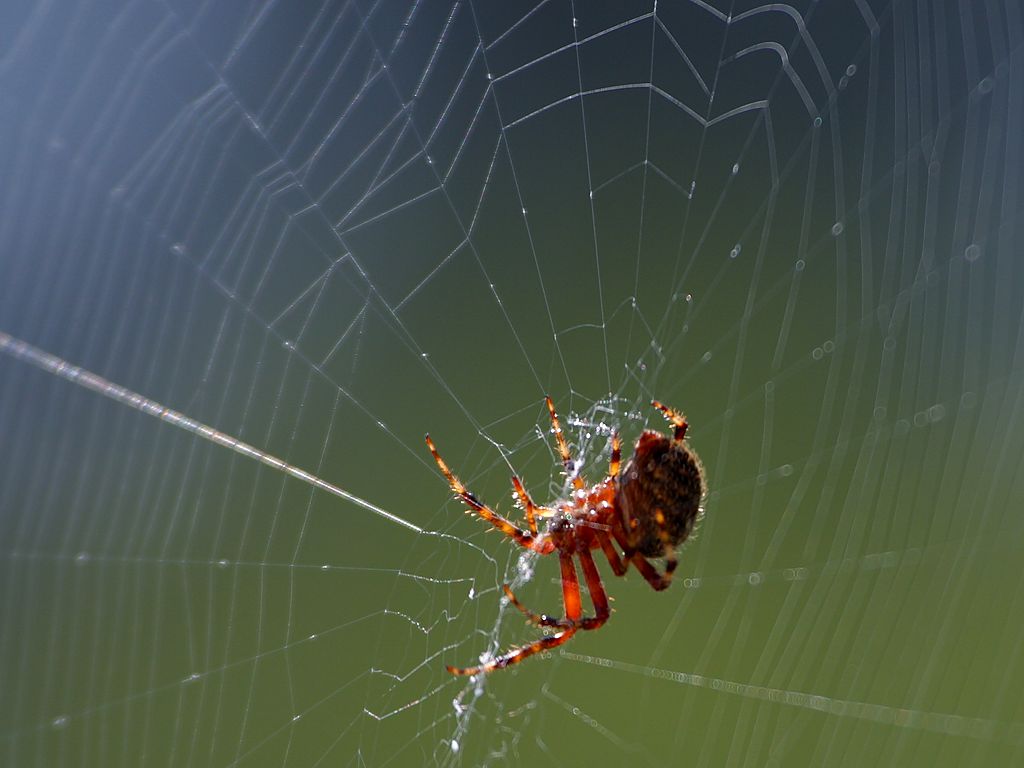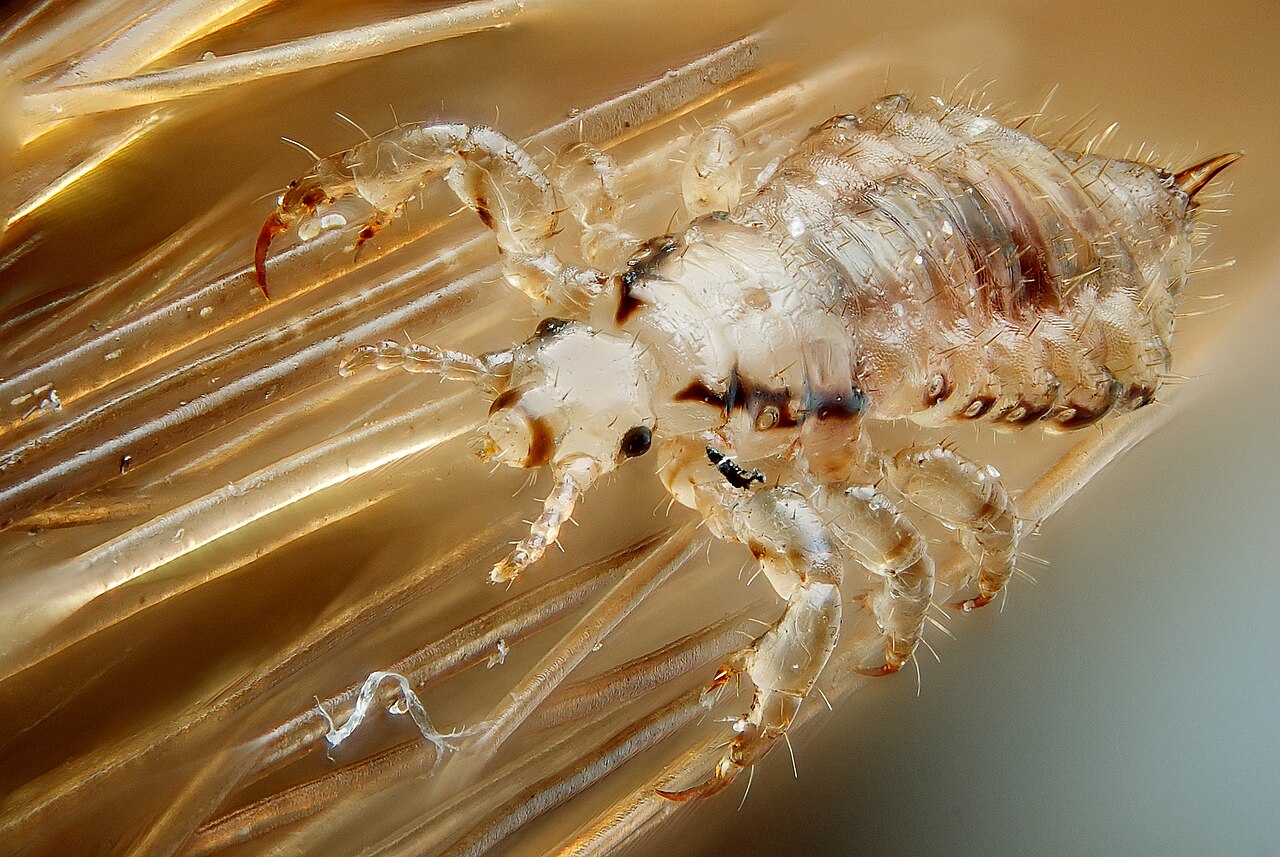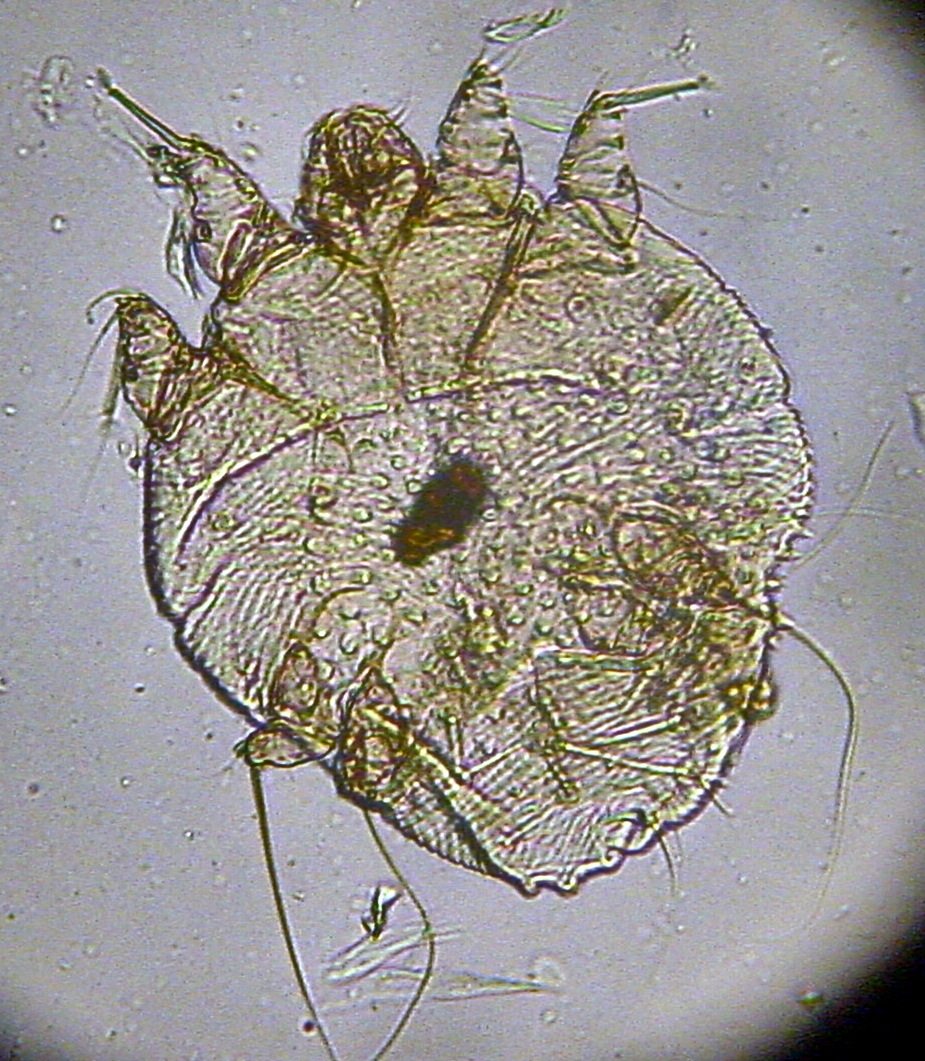Many bugs are only active at night. Nocturnal bugs and insects are known to bite both humans and animals.
Bed bugs are an example species that only come out at night as they’re very good at hiding during the day. Lice also feed and become considerably more active at night than during the day.
The nocturnal activity allows these bugs to feed without facing much adversity or many types of predators.
Table of Contents
13 Bugs That Bite At Night
Here are some of the most common species of nocturnal bugs that might be in North America.
1. Bed Bugs

Some of the widespread species that only bite at night are bed bugs. Rarely seen during the day when they prefer to hide under various objects and mattresses, these bugs are nocturnal.
You may or may not feel their bite. Some notice their presence when there’s blood on the skin or the sheets. Others feel itches and tingles when they bite.
In rare cases, some people don’t feel the bites of these small bugs as the skin doesn’t swell or itch.
Antihistamines or anti-itching creams are typically recommended to those who’ve been bitten by bed bugs and who have itchy skin.
These bugs have a brown or red-brown color and have the shape and size of apple seeds. They are among the smallest species that can bite at night.
Bed bugs require the warm blood of an animal or human to survive. With a constant host to feed on, they can survive up to a year.
2. Spiders

Spiders live in almost every house. Most species you find in your home are nocturnal but don’t bite.
Some species such as various jumping spiders or even venomous species such as The Brown Recluse might still bite, especially when roughly handled.
Another common species in homes, especially in basements, is Daddy Long-legs. This species likes dark damp places where it breeds and looks for prey such as insects or other small spiders.
Keeping these biting spiders out of the house involves having a multi-step plan which starts with trimming the flowers and vegetation around the house or that touches the house.
Another good method to keep spiders out is to keep all other bugs out as they are the food of these arachnids.
Frequent cleaning methods reduce the risks of facing biting spiders in the house. Deep cleaning and proper vacuuming are among the best methods to keep spiders out.
3. Mosquitoes

Some types of mosquitoes prefer to bite at night but they don’t pass the opportunity of a good blood meal during the day.
It’s female mosquitoes that tend to bite the most, but their high numbers in homes make it look like both males and females bite.
With sufficient access to a blood meal from humans, mosquitoes can survive almost all summer in the house.
On average, mosquitoes live up to 2 months, but their numbers increase if left unmanaged as they multiply quickly.
Certain factors such as higher air humidity and a warm house are known to create ideal habitat conditions for mosquitoes.
Mosquitoes rarely like to live in empty rooms of a house as they need a blood meal from humans or pets to survive.
They guide themselves by carbon dioxide or human breath to locate their next meal. This is why these nocturnal biting insects can also make their way around the house to you at night.
4. Lice

Lice are some of the most troublesome types of biting bugs, both at night and during the day.
Worldwide spread makes lice a common international problem and one that’s specific to homeless persons without access to sanitation in North America.
Some research suggests preschool children are the most likely to carry and spread lice in the United States.
Direct contact such as touching the hair of an infested person is the only way in which lice such as head lice can be transmitted.
These types of biting bugs don’t fly or jump. They can only crawl and prolonged contact is needed for them to change hosts.
These bugs are rarely larger than a sesame seed. They have 6 legs and they make their presence felt through extreme itching following their bites.
A difficult sleeping pattern is also seen in those affected by head lice. Most active at night, these types of bugs mostly bite when you go to bed.
You might also feel them moving around the head more at night. A tickling sensation means these bugs move.
5. Ants

Many types of ants in homes can bite. Ghost Ants are among the biting species that can make it indoors.
These types of ants are known for having a large appetite for sweet foods and greasy foods.
High indoor humidity is further known to create a perfect habitat for the species as well.
Homes that have plenty of vegetation around, especially the types that touch the house are prone to Ghost Ants invasions.
Cracks in the foundation or the walls are also known to make access for these tiny crawlers easier.
Trimming vegetation that touches the house or its foundation is the first step toward eliminating these ants.
Discovering their nests for elimination is also mandatory. These ants bite when their nest is threatened and this is the time when they are the most dangerous.
6. Chiggers

Chiggers are easily picked up when moving out in gardens, parks, or other areas with plenty of grass.
These bugs can attach themselves to your clothes or skin unless you’re using some type of insect repellent such as DEET.
Chiggers move around animals or humans searching for an exposed skin area to bite.
The effects of these bites include itching, extreme itching, and even pain.
Diseases can be transmitted by chigger bites. Even trouble peeing can be one of the effects of these bites.
Rashes or extreme itching are symptoms that can persist for up to a few days with chiggers.
Trimming vegetation around the house and the garden is one of the proven methods of reducing chigger populations and the risk of carrying them indoors.
Applying insect repellent when hiking or camping is also a good method of keeping these bugs away.
7. Scabies

Some of the most problematic bugs that bite at night are scabies. These bugs can only start biting weeks after setting on your body.
This means you already spread scabies to those around you and throughout the house.
Tiny scabies is typically found in skin fold areas around the body such as under the armpits.
True elimination might only be possible after visiting a doctor.
By the time itching has become prevalent in your case your family is also infested. Much of the scabies treatment recommended by doctors extends to the entire family.
Some of the symptoms of scabies include high itching sensations, especially at night.
Skin-to-skin contact is the main method scabies spread. As a result, public places such as the kindergarten are ideal locations for these mites to spread.
8. Kissing Bugs

Kissing Bugs are some of the most active biting species at night. They are so active during the night they come into homes attracted to lights.
Widespread in many Central and Southern US states, these bugs might a common problem when it comes to spreading diseases such as Chagas disease.
States such as Texas are ideal warm habitats for these large bugs to live in.
A blood meal is required by these bugs to survive. They can live up to 2 years if they have access to sufficient blood from animals or humans.
These bites might not be felt by humans, initially. Kissing bugs are also different from chiggers in the fact they don’t attach themselves to the skin.
Pets can be one of the vectors used to get inside the house by these bugs.
Vegetation near the home also favors the species’ pathways indoors.
Tiny gaps in the wall, around doors, and windows are also inviting for these bugs.
Leaving lights on during the night also acts as a magnet and draws juvenile and adult kissing bugs in.
9. Fleas

Fleas are highly active at night and dusk. These are some of the most widespread bugs known to bite.
Pets are one of the main ways fleas enter homes. Cats and dogs carry fleas. Small fleas specific to cats are known to be particularly active at night.
Known for spreading diseases such as the plague, fleas used to be one of the most feared bugs when it comes to human contact.
Today, fleas may still trigger allergies and be responsible for home infestations and bites that lid to itchiness.
You can distinguish fleas from other species by their jumping movements. Fleas can jump 100 times their size making a quick escape when you want to catch them.
Fleas are also known to multiply faster than many other types of biting bugs.
In 50 days, fleas can lay more than 2.000 eggs.
Eliminating fleas also means eliminating their eggs. The bugs can burrow into fabrics such as pet and cat beds easily.
This is why deep cleaning is always needed to eliminate the species and its eggs.
10. Sand Fleas

Most sand flea bites occur on the beach. Generally known as fleas, these types of bugs on beaches are named after regular fleas due to their jumping movements.
Moist areas on the beach are the most likely to house these bugs. Romantic barefoot walks on the beach at night can soon become problematic as these bugs bite.
Their bites can penetrate the skin. These bites are painful and they also lead to itchy skin.
Drinking blood, these bugs might also inject saliva and lead to skin-level infections.
Since most of these bugs are picked up only when walking on the beach, bites tend to happen on the feet or up to ankle level.
Large red patches of skin are some of the visual signs you’ve been bitten by sand fleas.
11. Ticks

Many types of ticks such as soft ticks are primarily nocturnal. Their bites are highly painful.
Ticks may also get stuck in your skin which means they need to be manually removed. Most ticks are picked up in vegetation as they don’t get indoors on their own.
One of the recommended ways of keeping ticks away is to only walk on pathways when trekking.
You can also keep ticks away by refraining from wearing shorts and short sleeve T-shirts.
Covering up your body and tucking your pants in the socks means ticks cannot bite and attach themselves to your skin easily.
This has a small dark body with 4 pairs of legs. The same tick can look a few times larger after biting your skin as it enlarges through food, which is the blood they feed on.
Most times, ticks can be removed with tweezers. You need to wash the bitten area with soap or alcohol afterward.
12. Mites

Mites such as Demodex mites are known to also bite at night. Small bugs such as biting mites are known to cause skin issues such as dermatitis.
Mites can be picked up almost anywhere out in nature. Thousands of biting mites can be picked up on the skin or clothes.
Bird mites are specific to farms and wild birds you can come in contact with. Swine mites are found on pigs and pig farms.
Rodents mites are one of the most specific species in homes. Carried by rats and mice, these mites can make their way into the house.
Other types of mites are also common indoors. Dust mites are also found in homes, but the species doesn’t bite.
13. No see ums

Some of the flies that have painful bites are No see ums. These flies are among the most common species that live in areas humans live, as long as there’s moisture for them to lay eggs in.
These flies come in contact with humans by entering homes at night, often attracted to lights.
They fly through open windows and seek out a blood meal to lay eggs. Only females No see ums can bite.
Common management techniques against No see ums include using insecticide on the areas around the house.
Removing all mosquitoes and their larvae is also important in bodies of water such as pools as No see ums can eat mosquito larvae.
How to Prevent Bugs That Bite at Night
Bug bites are mostly annoying. Many cause itching but some may also be painful. In rare cases, bug bites can also spread bacteria and diseases. Here’s how to keep most bugs away.
Close the windows at night
Open windows are an invitation to bugs at night. Initially attracted to light, bugs can enter and settle homes if they find food.
Closing the windows at night and installing fine mesh window screens are among the first measures to consider against bug invasions.
You also want to close doors and check for potential gaps around windows and door frames as these are also good pathways for bugs to make it indoors.
Don’t live the porch light on longer than needed
Some people like to use the porch light as an ambient light at night. This can prove troublesome as many bugs are nocturnal and active at night.
Attracted by the light, they make it indoors from the porch easily. They can make it indoors even when you open the door to get outside easily.
Using lights with sensors that only work when movement is detected is one of the methods of eliminating the problem of having a larger number of bugs and flies on your porch and in your house.
Trim vegetation around the house
Vegetation such as climbing plants on the house is an invitation to many species.
Spiders are among the first species to move indoors by climbing vegetation. Even more, overgrowing vegetation next to the house is a breeding site for many types of flies and bugs.
Damp flower soil attracts many bugs and flies which can then move into the house attracted to light, breathe carbon dioxide, or to various open foods.
Check pets for bugs
Cats and dogs are among the common pets that carry different nocturnal bugs in the house. Soft fleas are among the nocturnal biting bugs in the house mostly carried by cats and dogs.
You need to wash your pets regularly and use specific pet shampoo to keep bugs away. Limiting direct contact of your pets with other pets and with wild animals is also recommended when it comes to ensuring there are no fleas or ticks in the house.
Don’t live food out in the open
Food is one of the main reasons these insects make it indoors. Ants are among the most common species attracted to open sugary or greasy foods in the house that can also bite.
Make sure to have a cleaning routine for the kitchen as this is where food spills and leftover foods can attract most ants.
Ants are also seen as food for other species such as spiders. This means they can attract more bugs into your home and keeping all entryways sealed is a mandatory step to keeping them out and from biting.
Remove standing bodies of water around the home
Puddles, pools, and even soil garden soil that’s watered too much attract various types of biting flies.
If your house is on the beach, make sure to use insecticide as some types of biting bugs such as sand fleas might live here on moist sand even if there’s no vegetation in the immediate vicinity.
Covering up the pool and eliminating standing bodies of water also means you eliminate the location insects such as mosquitoes can multiply.